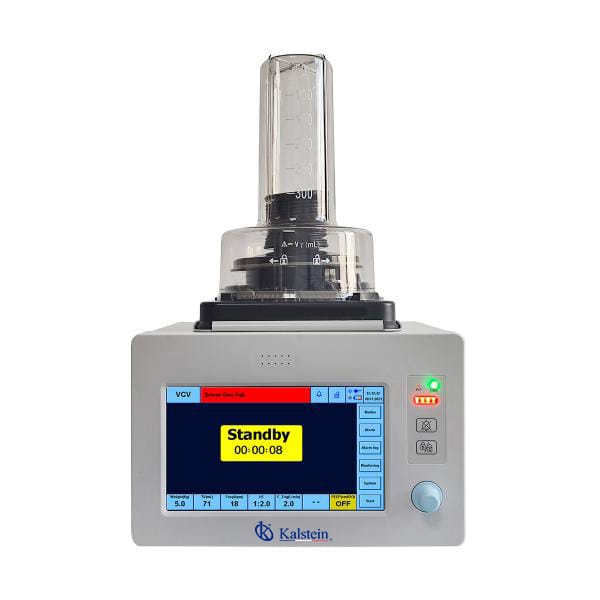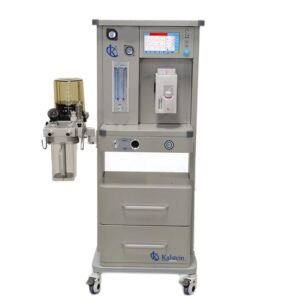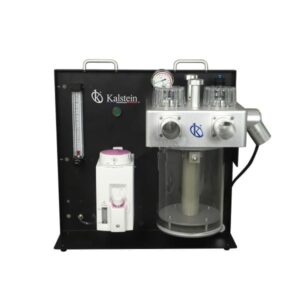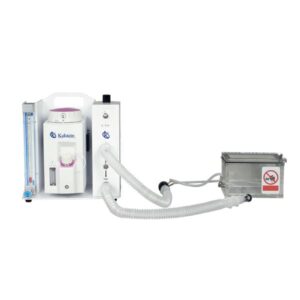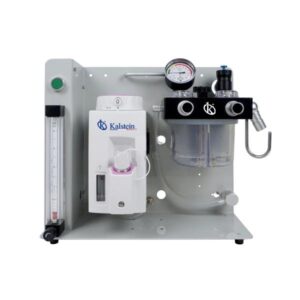Description
The Turbo-driven Veterinary Anesthesia Ventilator YR06104 is a cutting-edge solution for veterinary practices focused on efficiency and animal safety. This innovation eliminates the need for a high-pressure air source by utilizing a turbo-driven design that requires only an oxygen concentrator for optimal function. Perfect for use in pet hospitals, animal clinics, and even wildlife rescue stations, this ventilator ensures seamless automatic calculations of ventilation parameters based on the animal’s weight. Its various breathing modes, such as VCV, PCV, and SPONT, cater to diverse clinical needs. Lightweight and designed to save space, the YR06104 guarantees easy mobility and adaptability, safeguarding the health of animals throughout surgical procedures.
Market Price
The cost of veterinary anesthesia ventilators like the YR06104 can vary significantly based on features and brand reputation. It reflects a prudent investment for veterinary facilities committed to pioneering care. We recommend using Kalstein Plus for an automatic quotation to obtain precise pricing.
Frequently Asked Questions
What is the primary benefit of a turbo-driven ventilator?
The key advantage lies in its operation without high-pressure air demands, lowering both operational costs and complexity.
Is this ventilator suitable for all animal types?
Indeed, it’s compatible with a wide variety of animals, as it allows for the adjustment of ventilation parameters according to weight.
Advantages and Disadvantages
The major benefit of the Turbo-driven Veterinary Anesthesia Ventilator YR06104 is its portability and space-saving design, perfectly suited for various veterinary environments. Its automatic calculation of ventilation parameters promotes animal safety and effective operation. Meanwhile, its advanced technological features may require users unfamiliar with high-tech veterinary equipment to undergo a learning curve.
Product Use in the Field
In clinical settings, the YR06104 serves a crucial role during surgeries, facilitating adequate ventilation for animals that cannot breathe on their own. By adjusting its breathing modes to meet clinical demands, the ventilator ensures that diverse surgical procedures are performed safely and efficiently.
Recommendations
To maximize the effectiveness of the ventilator, adhere to regular maintenance and calibration as per the manufacturer’s instructions. Providing staff training on managing various ventilation modes will further enhance surgical outcomes.
Features
- Automatic calculation of ventilation parameters.
- Portable and space-efficient design.
- Multiple breathing modes: VCV, PCV, SPONT, and others.
- SPONT mode allows automatic ventilation when spontaneous breathing is absent.
Technical Specifications
| Model | YR06104 |
| Tidal volume (TV) | 20-1500ml |
| Breathing rate (Freq) | 1-150bpm |
| Spontaneous breathing rate (Freq_Spont) | 0-150bpm |
| Ratio of inhalation and exhalation (I:E) | 9.9:1-1:9 adjustable |
| Hold time | 0-50% |
| Flow trigger sensitivity (F_Tring) | 0.5-20L/min, OFF |
| Pressure Trigger Sensitivity (P_Tring) | -1-20cmH2O, OFF |
| End-expiratory pressure | 3-20cmH2O, OFF |
| SIMV frequency (Fre_SIMV) | 2-60bpm |
| Inspiratory time (T_Insp) | 0.1-12s |
| Pressure support (PS) | 0-60cmH2O |
| Inspiratory pressure (T_Insp) | 0-60cmH2O |
| Tidal volume of expiratory | 0-2500ml |
| Tidal volume of inspiratory | 0-2500ml |
| Minute Ventilation (MV) | Display range: 0-99L/min Use range: 0-25L/min |
| Spontaneous minute ventilation (MV_Spont) | Display range: 0-99L/min Use range: 0-25L/min |
| Peak pressure (Ppeak) | 0-80cmH2O |
| Platform pressure (Pplat) | 0-80cmH2O |
| Mean pressure (Pmean) | 0-80cmH2O |
| Inhaled oxygen concentration (FiO2) | 15-100% |
| End-expiratory pressure (PEEP) | 0-20cmH2O |
| Driving gas pressure (Press_Drive) | 0-900kpa |
| Paw-T waveform | Pressure monitoring range: 0~120cmH2O; X-axis: 0~10s |
| Flow-T waveform | Y-axis:-1800~180L/min X-axis: 0~10s |
| V_T waveform | Z-axis:0~2000L/min X-axis:0~10s |


